Send your progress notes and photos to:
Donor Relations
Penn Medicine Development and Alumni Relations
3535 Market Street, Suite 750
Philadelphia, PA 19104-3309
PennMedicine@alumni.upenn.edu
1980s
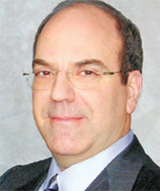 Michael H. Levy, M.D., Ph.D., G.M.E. ’81, a professor and director of the Pain and Palliative Care Program at Fox Chase Cancer Center, has received the Lifetime Achievement Award from the American Academy of Hospice and Palliative Medicine. Levy taught the first death and dying class at Jefferson Medical College, where he earned his medical degree. He was a senior resident in internal medicine and a fellow in medical oncology at HUP, where he helped form a palliative care service. In 1983, he was elected to the board of directors of the National Hospice Organization and since then has served as its treasurer and vice chairman. Levy was awarded the organization’s Person of the Year Award and its Heart of Hospice Clinician Award in 2003. Levy has also been president of the American Academy of Hospice and Palliative Medicine and chairs the Palliative Care Guideline Panel of the National Comprehensive Cancer Network. In 2014, he received the inaugural Excellence in Teaching Award from the American Society for Clinical Oncology.
Michael H. Levy, M.D., Ph.D., G.M.E. ’81, a professor and director of the Pain and Palliative Care Program at Fox Chase Cancer Center, has received the Lifetime Achievement Award from the American Academy of Hospice and Palliative Medicine. Levy taught the first death and dying class at Jefferson Medical College, where he earned his medical degree. He was a senior resident in internal medicine and a fellow in medical oncology at HUP, where he helped form a palliative care service. In 1983, he was elected to the board of directors of the National Hospice Organization and since then has served as its treasurer and vice chairman. Levy was awarded the organization’s Person of the Year Award and its Heart of Hospice Clinician Award in 2003. Levy has also been president of the American Academy of Hospice and Palliative Medicine and chairs the Palliative Care Guideline Panel of the National Comprehensive Cancer Network. In 2014, he received the inaugural Excellence in Teaching Award from the American Society for Clinical Oncology.
1990s
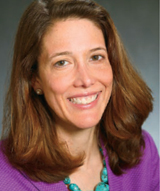 Anne Rentoumis Cappola, M.D. ’94, Sc.M.,
Anne Rentoumis Cappola, M.D. ’94, Sc.M., associate professor in Penn’s Division of Endocrinology, Diabetes, and Metabolism in the Department of Medicine, was named co-director of Penn’s Clinical and Translational Research Center. She trained in internal medicine at Brigham and Women’s Hospital and in endocrinology at Massachusetts General Hospital and the Johns Hopkins Hospital. She joined the Division of Endocrinology, Diabetes, and Metabolism at Penn in 2003. Cappola is recognized as a leader in translational research at the intersection of endocrinology and geriatrics, combining population-based and mechanistic research studies to identify the hormonal underpinnings of human aging. Her scientific contributions have led to changes in treatment recommendations for thyroid disorders in older individuals. She has also pioneered studies in human subjects that seek to determine the role of endocrine abnormalities in age-associated frailty. She is an associate editor for the Journal of the American Medical Association.
2000s
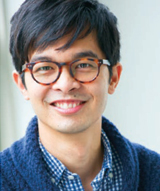 Dzung X. Vo, M.D. ’04, is a pediatrician specializing in adolescent medicine at British Columbia Children’s Hospital and a clinical assistant professor at the University of British Columbia in Vancouver. His medical practice, teaching, and research emphasize promoting resilience in young people to help them thrive in the face of stress and adversity. In partnership with Jake Locke, M.D., he developed MARS-A (Mindful Awareness and Resilience Skills for Adolescents), an eight-week mindfulness training program for adolescents with depressive symptoms, with or without chronic illness or chronic pain. In April, Vo’s book, The Mindful Teen: Powerful Skills to Help You Handle Stress One Moment at a Time, was issued by New Harbinger Publications. A student of Thich Nhat Hauh, a Zen Master, poet, scholar, and activist, Vo has noted that “my mindfulness training and practice has helped me to get through some difficult and intense periods in my own medical training and in my life.” Today, when teens are often overwhelmed with stress from school and families, Vo believes mindfulness can give them a tool to stop their habitual automatic reactions and rediscover their inner strength and resilience.
Dzung X. Vo, M.D. ’04, is a pediatrician specializing in adolescent medicine at British Columbia Children’s Hospital and a clinical assistant professor at the University of British Columbia in Vancouver. His medical practice, teaching, and research emphasize promoting resilience in young people to help them thrive in the face of stress and adversity. In partnership with Jake Locke, M.D., he developed MARS-A (Mindful Awareness and Resilience Skills for Adolescents), an eight-week mindfulness training program for adolescents with depressive symptoms, with or without chronic illness or chronic pain. In April, Vo’s book, The Mindful Teen: Powerful Skills to Help You Handle Stress One Moment at a Time, was issued by New Harbinger Publications. A student of Thich Nhat Hauh, a Zen Master, poet, scholar, and activist, Vo has noted that “my mindfulness training and practice has helped me to get through some difficult and intense periods in my own medical training and in my life.” Today, when teens are often overwhelmed with stress from school and families, Vo believes mindfulness can give them a tool to stop their habitual automatic reactions and rediscover their inner strength and resilience.
Seth J. Gillihan, Ph.D. ’08, whose clinical practice is located in Haverford, Pa., is coauthor of Overcoming OCD: A Journey to Recovery, issued earlier this year by Rowman & Littlefield Publishers. Janet Singer recounts a mother’s moving quest to help her son recover from obsessive-compulsive disorder, and Gillihan provides expert commentary throughout. Gillihan specializes in cognitive-behavioral treatment for anxiety and depression and related conditions. A clinical assistant professor of psychology in Penn’s Department of Psychiatry and a visiting assistant professor of psychology at Haverford College, he formerly worked at Penn’s Center for the Treatment and Study of Anxiety.
OBITUARIES
1940s
William W. Wilson, M.D. ’42, Wynnewood, Pa., a retired psychiatrist; April 27, 2014. After completing his residency in internal medicine at the U.S. Naval Hospital in Philadelphia in 1949, he taught neurology in Penn’s School of Medicine until 1958. He was the chief of neurology at Philadelphia General Hospital from 1949 until it closed in 1977. During World War II, he served as a Navy flight surgeon with the U.S. Navy in the Pacific, and received the Distinguished Flying Cross.
Harry J. Fryer Jr., M.D. ’43, San Luis Obispo, Calif., a retired pediatrician who had maintained a practice there for 35 years; June 17, 2014. He had helped found Sierra Vista Hospital. During World War II, he served as a ship’s doctor in the Pacific.
Bruce R. Marger, M.D. ’44, G.M. ’49, Allentown, Pa., former chief of medicine and cardiology at Sacred Heart Hospital in Norristown; April 18, 2014. During World War II, he served as a surgeon with the U.S. Army in Europe. A diplomat of the American College of Internal Medicine and a fellow in the American College of Cardiology, Marger had also been an attending physician/cardiologist at the Veterans Administration Clinic in Allentown.
John E. Hopkins, M.D. ’46, Danville, Pa., a retired general surgeon at Lankenau Hospital who practiced there from 1950 to 1975; March 5, 2014. He served with the U.S. Army of Occupation in Japan with the Army Medical Corps. After his time at Lankenau, he worked in the emergency room at Memorial Hospital, Pottstown.
James R. Glessner Jr., M.D. ’47, Grand Rapids, Mich., a retired orthopaedic surgeon; May 1, 2014. He served in the U.S. Army during World War II and the Korean War, earning the Army’s Bronze Star medal as a captain in the Medical Corps. Elected to the Alpha Omega Alpha society at Penn, he did his orthopaedic residency at The Henry Ford Hospital in Detroit. He founded a Grand Rapids orthopaedic group that has evolved into River Valley Orthopedics.
Lee H. Miller, M.D. ’47, Kings-port, Tenn., retired staff physician for Eastman Kodak; May 15, 2014. A veteran of the U.S. Army, he also had been employed by Bell Telephone, the University of Cincinnati College of Medicine, and Procter & Gamble.
Robert Gilmore Pontius, M.D. ’47, G.M.E. ’54, Worcester, Mass., a retired heart surgeon in Pittsburgh; April 12, 2014. During World War II, he served in the Navy and participated in the Navy’s V-12 officer training program, attending Swarthmore College and Penn’s School of Medicine. He later served in Korea. Pontius did his surgical training at Baylor College of Medicine in Houston, where he worked with Michael Debakey and Denton Cooley, two surgeons and professional rivals who would become household names in the post-war field of heart surgery. At Harvard Medical School, Pontius trained under his uncle, Robert Gross of Children’s Hospital in Boston, another legend. A year after coming to Children’s Hospital of Pittsburgh in 1957 to be a pediatric cardiothoracic surgeon, Pontius performed the first successful open-heart operation using a pump-oxygenator, a new machine that did the work of both the heart and the lungs.
Erwin A. Cohen, M.D. ’48, Huntingdon Valley, Pa., a retired surgeon; April 9, 2014. He was a veteran of the Korean War and attained the rank of captain in the U.S. Army.
Ralph E. Faucett, M.D., G.M. ’48, San Diego, a retired Navy physician; January 17, 2014. He served as a surgeon during the height of World War II. He crossed the South Pacific during some of the most intense fighting of the war, caring for soldiers throughout the Mariana Islands and Okinawa campaigns as well as during the postwar occupation of Japan. Faucett returned to Japan in 1962, serving as the chief of medicine for the naval hospital in Yokosuka. Later, he was named director of submarine medicine at the U.S. Naval Medical Research Laboratory. He retired from active duty in 1974 with the rank of rear admiral, having been in command of multiple naval hospitals throughout the country. After retiring, he was a consultant to the California Department of Health. Through his estate, he has provided more than $3 million to Indiana University School of Medicine, where he earned his medical degree, for a scholarship to support future generations of I.U. medical students.
Robert W. Gibson, M.D. ’48, G.M.E. ’52, Parkton, Md., former president of the Sheppard & Enoch Pratt Hospital; March 8, 2014. He was instrumental in ending the hospital’s bankruptcy and overseeing desegregation of its facilities. A former president of the American Psychiatric Association, he published “Strategic Planning and Marketing of Mental Health Services” in Psychiatric Annals (December 1984).
Robert E. Murto, M.D. ’48, G.M. ’50, Vero Beach, Fla., a retired ophthalmologist; March 20, 2014. During the Korean War, he served in a MASH unit with the 1st Marine Division. He was an early proponent of the intraocular lens.
Karl F. Rugart Jr., M.D. ’48, G.M.E. ’52, Haverford, Pa., a retired obstetrician-gynecologist, affiliated with Pennsylvania Hospital, who had practiced from 1948 until 1998; April 30, 2014. A former associate professor at Penn, he has also worked at Booth Maternity Center in Overbrook until it closed in 1989 and at the former Pennsylvania Hospital Institute, the Philadelphia Women’s Penitentiary, Graduate Hospital, and Presbyterian Hospital. Rugart claimed to have delivered nearly 7,000 babies during 50 years on the job. Early in his career, he was a Navy doctor at Fort Knox, Ky., and the Philadelphia Naval Hospital before being assigned to Lakehurst Naval Hospital in 1949. In 1954, he was decommissioned and joined Pennsylvania Hospital’s medical staff.
Jack J. Albom, M.D., G.M. ’49, New Haven, Conn., a retired dermatologist and former professor of medicine at Yale University; November 12, 2012. He was also a retired Army Air Force colonel. Upon retiring to Florida, he became a consultant of Dermatology at the VA Hospital in Pompano Beach.
Philip N. Sawyer, M.D. ’49, G.M.E. ’55, Brooklyn, N.Y., former chair of vascular surgery at Downstate Medical Center; April 4, 2014. He was founding editor of the Journal of Investigative Surgery. He served in the U.S. Navy during World War II and the Korean War.
1950s
John Bono, M.D., G.M. ’50, Kittanning, Pa., a retired otorhinolaryngologist; April 4, 2014. He served in the U.S. Army until attending medical school at the University of Pittsburgh 1944-1948. He set up practice in Kittanning in 1952 and practiced 1952-1994, with a return to military service at Wright-Patterson Air Force Base in Dayton, Ohio, 1955-56.
Earl Budin, M.D. ’50, Santa Barbara, Calif., a retired associate clinical professor of radiology at the UCLA Medical Center; January 13, 2014.
Philip M. Deatherage, M.D. ’51, Crossville, Tenn., a retired general surgeon; February 28, 2014. He served with the U.S. Navy during the Vietnam War. He had been chief surgical resident at Allentown Hospital. After his private practice from 1958 to 1974, he practiced with Cumberland Medical Center and Crossville Medical Group and later served as medical director of the Life Care nursing home.
Anthony J. Oropallo, M.D., G.M. ’51, Barrington, N.J., a retired ophthalmologist; February 20, 2014. Named Barrington Borough’s Citizen of the Year in 1973, he had also been a longtime member of the Barrington Fire Company.
Kenneth V. Dole, M.D. ’52, Palo Alto, Calif., a retired physician who maintained a practice there for many years; March 24, 2014.
L. Mario Garcia, M.D., G.M. ’52, Clermont, Fla., a retired surgeon who had practiced in Delaware for many years; July 29, 2012.
Edwin J. Levy, M.D., G.M.E. ’52, Wynnewood, Pa., February 20, 2013. In addition to his private practice, he was a clinical professor of dermatology at the University of Pennsylvania.
Harry W. Schoenberg, M.D. ’52, G.M.E. ’56, Sedona, Ariz., retired head of urology at the University of Chicago Pritzker School of Medicine, 1976-1993; November 19, 2013. He served two years in the U.S. Army in Germany following World War II. After completing his residency training at Penn, he joined its urology faculty. He served as chair of the Department of Urology at the University of St. Louis for four years before joining the University of Chicago. A former Sedona Citizen of the Year, he had also been chairman of the board of the Sedona Medical Center.
David S. Masland, M.D., G.M. ’53, Carlisle, Pa., a retired physician who had maintained a practice there for many years; April 2, 2014. He was a veteran of the Korean War. In 1976, he was president of the Pennsylvania Medical Society. He had been a board member of the Central Pennsylvania Conservancy.
Robert A. Wingerd, M.D. ’53, G.M.E. ’57, Chambersburg, Pa., a retired family practitioner; May 4, 2014.
Willard Aronson, M.D. ’54, Atlanta, a retired pathologist who had maintained a practice in Oklahoma City from 1972 to 1997; November 19, 2013. During World War II, he served as a pathologist with the U.S. Army in Europe. He was a clinical associate professor of pathology from 1997 to 2010 at the University of Oklahoma and received an award for teaching excellence. He was a fellow of the College of American Pathologists.
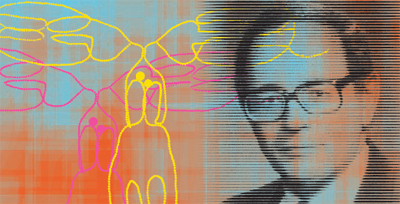
Gerald M. Edelman, M.D. ’54, Ph.D., La Jolla, Calif.; May 17, 2014. Widely recognized as a father of modern immunology, he was a co-recipient of the Nobel Prize for Physiology or Medicine in 1972 for his early studies on the structure and diversity of antibodies. As a boy, Edelman studied violin and considered a career in music before graduating from Ursinus College with a B.A. degree in chemistry. After earning his medical degree, he spent a year at Penn’s Johnson Foundation for Medical Physics, followed by training at the Massachusetts General Hospital. He then served as a captain in the Army Medical Corps in Paris. He earned his Ph.D. degree at the Rockefeller Institute in 1960, where he spent many years, becoming the Vincent Astor Professor and founding director of the Neurosciences Institute. In 1992, Edelman moved to the Scripps Research Institute in La Jolla.
After his work with antibodies, Edelman and his laboratory group focused on elucidating the role of cell adhesion molecules, proteins that connect cells to one another and to substrates during development. According to the late Leif H. Finkel, M.D. ’81, Ph.D. ’85, professor of bioengineering at Penn, Edelman’s discoveries in the lab “reshaped the field of developmental biology.” In a profile in Penn Medicine, Edelman described his work after receiving the Nobel Prize: “to try to understand morphologic evolution, to try to understand how genes work in an epigenetic world, and to try to understand how the most remarkable product of evolution, the brain, gives rise to the most remarkable property, consciousness” (Fall 1990). He rejected the prevalent notion that the best model for the brain was a computer – that is, hard-wired for certain capacities. Instead, he argued that it is shaped over time through experiences that strengthen neuronal connections.
Edelman’s later writings – including books for general audiences – drew sharply opposing reviews from neuroscientists. The Remembered Present (1990) advanced a completely formulated biologically based theory of consciousness. His most recent book was Second Nature: Brains Science and Human Knowledge (2006). In addition to receiving the Nobel Prize, Edelman was elected to the National Academy of Sciences, the American Philosophical Society, and the Academy of Sciences, Institute of France. In 1973, the University of Pennsylvania awarded him an honorary degree; and in 1990, he was honored with the Distinguished Graduate Award of Penn’s School of Medicine.
Robert L. Perneski, M.D. ’54, G.M.E. ’64, St. Marys, Pa., a retired orthopaedic surgeon who had worked at Elk Regional Health Center for many years; May 5, 2014.He served in the U.S. Army during World War II. He was a former president of the Elk County Medical Society.
Robert F. Crawford, M.D., G.M.E. ’55, Thomasville, Ga., a retired pediatrician; April 28, 2014. A former president of the Maricopa Medical Society and of the Arizona Pediatric Society, he also had served as a director of the Maricopa County Medical Society and as vice president of the Maricopa Foundation for Medical Care. He had been chair of pediatrics at Good Samaritan Hospital and at St. Joseph’s Hospital and Medical Center.
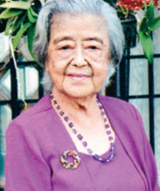 Myint Myint Khin, M.D., G.M. ’55, Rangoon, Myanmar (Burma), former chair of the Department of Medicine at the Institute of Medicine in Mandalay; June 19, 2014. As an undergraduate at the University of Rangoon, she studied English language and literature, then pursued medicine at the same university. Her first posting was as civil assistant surgeon at Rangoon General Hospital. In 1953, she married San Baw, M.D., G.M. ’58, who would become chief of orthopaedic surgery at Mandalay General Hospital. After her time at Penn’s Graduate School of Medicine, Khin also trained at the Royal College of Physicians, Edinburgh. During the 1980s, she was a consultant in the World Health Organization’s Southeast Asia regional office in New Delhi, India, where she spent nearly seven years. After her return to Burma in 1992, she remained active until her death and was respectfully addressed as “Mummy Gyi,” or “our elder mummy.” According to a former colleague, she “built the strongest department of medicine in Burma, which produced hundreds and thousands of doctors meeting the international standard.” In addition, Myint Myint Khin did not hesitate to voice her opinions – including criticisms of the Burmese governments. In March 2013, her book of collected poems written in English, Poetry For Me, was unveiled at a ceremony at the Myanmar Medical Association in Rangoon, Burma.
Myint Myint Khin, M.D., G.M. ’55, Rangoon, Myanmar (Burma), former chair of the Department of Medicine at the Institute of Medicine in Mandalay; June 19, 2014. As an undergraduate at the University of Rangoon, she studied English language and literature, then pursued medicine at the same university. Her first posting was as civil assistant surgeon at Rangoon General Hospital. In 1953, she married San Baw, M.D., G.M. ’58, who would become chief of orthopaedic surgery at Mandalay General Hospital. After her time at Penn’s Graduate School of Medicine, Khin also trained at the Royal College of Physicians, Edinburgh. During the 1980s, she was a consultant in the World Health Organization’s Southeast Asia regional office in New Delhi, India, where she spent nearly seven years. After her return to Burma in 1992, she remained active until her death and was respectfully addressed as “Mummy Gyi,” or “our elder mummy.” According to a former colleague, she “built the strongest department of medicine in Burma, which produced hundreds and thousands of doctors meeting the international standard.” In addition, Myint Myint Khin did not hesitate to voice her opinions – including criticisms of the Burmese governments. In March 2013, her book of collected poems written in English, Poetry For Me, was unveiled at a ceremony at the Myanmar Medical Association in Rangoon, Burma.
Francis A. White, M.D., G.M. ’56, Worcester, Mass., retired chief of radiology at Worcester City Hospital and other hospitals in Worcester County; April 29, 2014.
Richard D. Brobyn, M.D. ’57, Ph.D., G.M. ’61, Birch Bay, Wash., a retired clinical pharmacologist; March 19, 2014. During five years of active duty with the U.S. Navy, he worked in decompression and mixed gases. He then went on to spend 25 years in the Navy Reserves. Much of his medical career involved doing clinical trials and drug research.
William Anthony Grattan, M.D., G.M.E. ’57, Troy, N.Y., a retired pediatrician; February 15, 2014. He had been a chief resident at the Children’s Hospital of Philadelphia. A former senior vice president for medical affairs at Seton Health System, he was appointed Albany County Health Commissioner in 1981 and served in that position for more than a decade. During his tenure at the health department he was a leader in developing smoking cessation programs and worked to abate lead paint in buildings throughout the county. He was appointed by the first Governor Cuomo as a member of the Maternal Child Block Grant Advisory Board, a group of physicians charged with allocating millions to programs for mothers and children across the state. His honors include the Dr. Hermann M. Biggs Memorial Award from the New York State Public Health Association and the New York State Association of County Health Officials Career Achievement Award in 2006.
1960s
Chote Thumasathit, M.D., G.M. ’61, McKinney, Tex., a retired family practitioner; July 15, 2012. His wife is Bhoonsri Sathirapatya, M.D., G.M ’63.
Nicholas J. Vincent, M.D. ’61, Santa Barbara, Calif., a retired ophthalmologist who had maintained a practice there for 31 years; February 24, 2014. He had been a counselor of the American Academy of Ophthalmology.
Legacy Giving
Annuities: A “Win-Win” to Support Tomorrow’s Leaders
Richard R. Bocchini, Ph.D., has served at Pennsylvania Hospital for 40 years, and from his dedication to this institution grew the desire to set up a planned gift benefiting the Psychology Internship Program.
“I’ve personally seen how the knowledge and experience our students gain from the Psychology Internship Program is invaluable,” said Dr. Bocchini, who was the first director of Children and Family Services established at the Hall-Mercer Center on behalf of Pennsylvania Hospital’s Community Mental Health Program. “The in-depth training and supervision which they receive prepares them to become tomorrow’s leaders.”
Over the 30-year history of the Psychology Internship Program, graduates have achieved the highest success across the field of mental health, obtaining clinical and leadership positions in top universities, medical schools, social and community agencies, and private practice. The program has achieved national recognition and has been approved by the American Psychological Association.
Students compete to enter the program: fewer than 3% of approximately 200 applicants are accepted. The year-long program of intensive training and education traditionally serves as the final year of the doctoral graduate program and as an opportunity for postdoctoral graduates to develop the knowledge required for state licensure as a psychologist.
Dr. Bocchini’s gift to support the program is a reflection of his professional interest in supporting psychologists early in their careers. He worked with the development office to set up a Charitable Gift Annuity. This option allows you to make a gift in exchange for an income tax deduction and life-long, guaranteed annuity payments.
“This Charitable Gift Annuity is a win-win,” said Dr. Bocchini. “My gift guarantees some tax-free income for me, and I have the satisfaction of knowing that it will later benefit students by helping support their development as professional psychologists.”
As you plan your financial future, the Office of Planned Giving is ready to assist in developing an appropriate strategy to incorporate your charitable objectives. Contact Christine S. Ewan, J.D., Executive Director of Planned Giving, at 215-898-9486 or cewan@upenn.edu.
For more information, please visit the website at: www.plannedgiving.med.upenn.edu.
Merrill N. Werblun, M.D. ’61, Henderson, Nev., a retired physician; October 26, 2013. He completed his training at Abington Memorial Hospital. After spending 10 years practicing rural medicine, he began a career in academia and administration. He was a professor of family medicine in the University of California system and at the University of Hawaii. At Queens Medical Center in Honolulu, Werblun was vice president of medical services. He was founding president of the Hawaii Center Credentialing Service and served as a physician surveyor for the Healthcare Facilities Accreditation Program.
Rudolph J. Scrimenti, M.D., G.M. ’62, Mequon, Wis., a retired dermatologist; March 22, 2013. He had been a lecturer at the Medical College of Wisconsin.
Ira B. Silverstein, M.D. ’64, Laguna Beach, Calif., a retired psychiatrist; October 9, 2013. He did an internship in medicine at Yale and completed a psychiatric residency at Columbia-Presbyterian Medical Center, where he was chief resident. After spending two years in the Air Force in Japan, in 1970 he returned to Manhattan, where he entered private practice in psychiatry and taught at Columbia University. In 1988, he relocated to South Orange County, Calif., continuing his private practice, teaching at University of California-Irvine, and attending at various hospitals.
Kenneth C. Bovée, D.V.M., G.M.E. ’69, Stonington, Maine, emeritus professor of medicine and the first recipient of the Corinne R. and Henry Bowen Professorship in Medicine at Penn’s School of Veterinary Medicine; May 23, 2014. He joined the faculty as an assistant professor in 1964. He was chief of the section of medicine for 16 years and chair of the Department of Clinical Studies for six years, during the construction of and move (1981) into the new small animal hospital, now the Ryan Veterinary Hospital. Bovée was awarded the Ralston Purina Small Animal Research Award (1980), and he wrote Canine Nephrology (1984).
Evelyn Wiener, M.D., G.M.E. ’00, Elkins Park, Pa., executive director of Penn’s Student Health Service; May 8, 2014. Earlier, she was an attending physician at Temple Hospital 1980-1987 and then at Penn Medicine, where she also taught. She was appointed associate director of Student Health in 1989 and became executive director in 2000. A recipient of the American College Health Association’s lifetime achievement award, Wiener was a former president of the Mid-Atlantic College Health Association.
FACULTY
Kenneth C. Bovée. See Class of 1969.
Karl F. Rugart Jr., M.D. See Class of 1948.
Evelyn Wiener, M.D. See Class of 2000.
William W. Wilson, M.D. See Class of 1942.